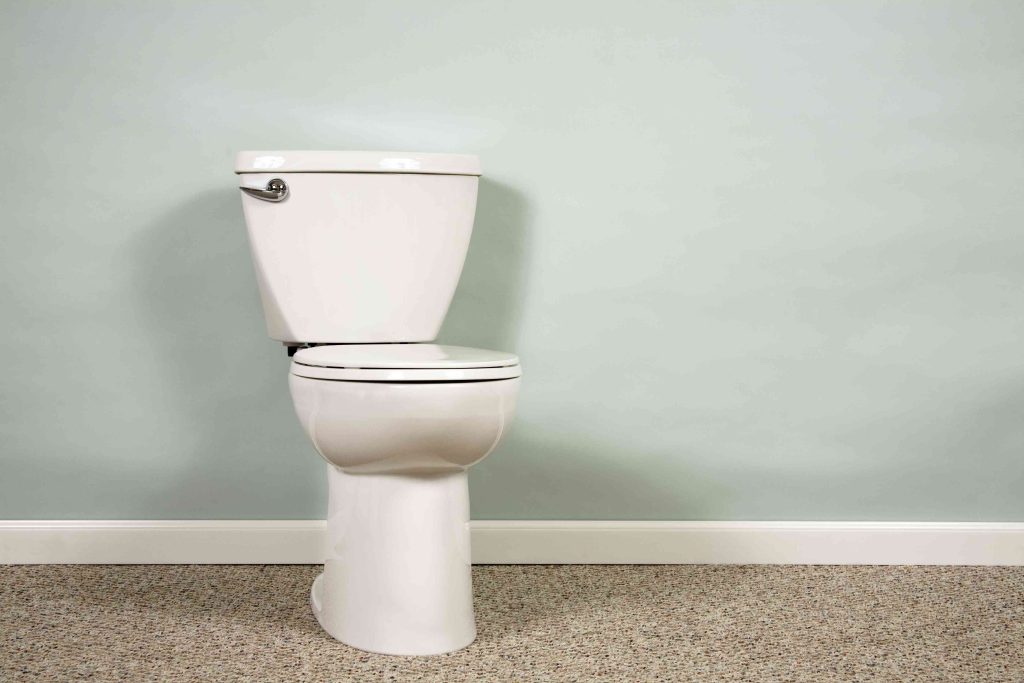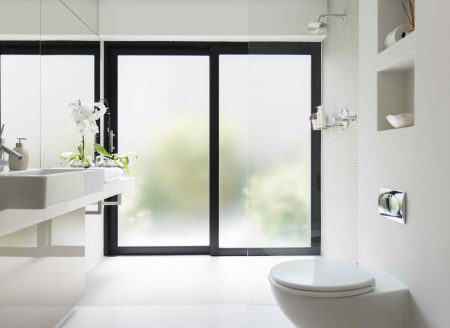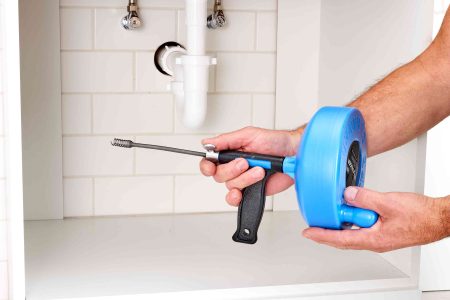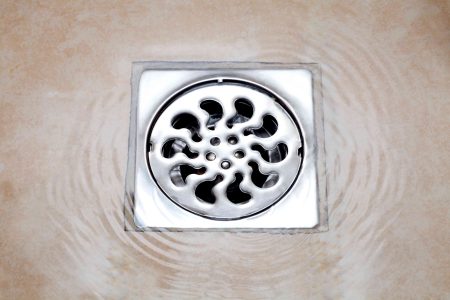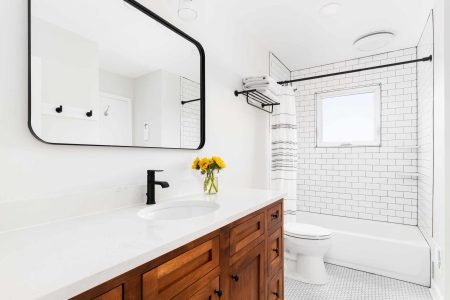When painting your bathroom walls, you want your paint job to be neat and immaculate. One challenging area, even for professional painters, is painting behind the toilet tank. This thin, tight space—usually about 2 inches wide—seems to defy all efforts to paint it cleanly.
Forcing a paintbrush behind the toilet tank doesn’t work: You end up with a smeary ring of paint around the toilet tank and plenty of unpainted areas. And conventional paint rollers are too thick to do the job.
The good news is that you can paint behind the toilet tank. including the baseboards, without removing the toilet. You have a few simple, inexpensive methods at your disposal: using a thin roller, making your own DIY paint pad, or removing just the toilet tank. These methods, which are tricks of the painter’s trade, will help you paint behind the toilet neatly and cleanly without too much work.
What You’ll Need
Equipment / Tools
Roller Method
- Thin high-density foam roller cover
- 6-inch roller frame
- 6-inch paint tray
- Rubber band
- 2-inch paintbrush
DIY Paint Pad Method
- Hot glue gun
- Rubber band
- 2-inch paintbrush
Materials
Roller Method
- Garbage bag
DIY Paint Pad Method
- Garbage bag
- 1 kitchen sponge (without abrasive pad)
- 3 paint stirring sticks
Instructions
Paint Behind a Toilet With a Thin Roller
Paint rollers are a great way to paint walls. But conventional paint roller covers are 2 1/4 inches in diameter—too thick for the space behind the tank. The solution is to use a thin, high-density foam roller that’s just 1 inch or 1 1/4 inch in diameter. Because you’ll cover the entire toilet tank in plastic, the area will be protected from smears or drips.
-
Protect Tank
Remove the toilet lid and set it aside. Invert a clean garbage bag and fit it over the toilet tank. On the toilet seat side of the tank, cinch together the excess plastic and bind it with the rubber band.
-
Pour Paint
Pour about 1 cup of paint into the 6-inch paint tray. Dip the foam roller into the tray. Roll it out dry on the tray.
-
Paint Behind Toilet Tank
Continue the bathroom wall paint behind the toilet tank. Go as far as you can (about 5 inches). There will be an unpainted section directly behind the tank that no one can see.
-
Paint Behind Toilet Bowl
You can paint the wall below the tank (directly behind the toilet bowl) either with the thin paint roller or switch back to the conventional paint roller or a brush.
Paint Behind a Toilet With a DIY Paint Pad
Another method of painting behind a toilet is to make your own thin, long-handled paint pad. Rolling paint usually produces better color consistency, but using a sponge or pad is another solution if you can’t or don’t want to purchase a thin paint roller setup.
-
Protect Tank
Lift the toilet tank lid and carefully store it outside of the bathroom. Fit a clean garbage bag over the toilet tank. Pull the excess plastic toward you (the toilet seat side of the tank) to smooth the plastic behind the tank. Use the rubber band to tightly bind the excess bag material.
-
Make the DIY Paint Pad
- Use a utility knife to score a 1-inch mark on one of the paint-stirring sticks. Snap off the piece. Repeat for a second piece.
- Lay the two whole paint stirring sticks side by side.
- With the hot glue gun, stick the two 1-inch pieces of wood over the stirring sticks to join them and form a handle for the paint pad. Do not glue within three inches of the end.
- Glue the sponge to the end of the handle assembly.
-
Dab Paint on Pad
Use the paintbrush to transfer paint from the can to the pad (the sponge). Do not overload the pad.
-
Paint Behind Tank
Use the paint pad to continue the paint behind the toilet tank. Paint up to the middle of the tank. Begin at the side, then work upward, then back down the other side.
-
Paint Behind Bowl
Switch back to the conventional paint roller or brush to paint behind the toilet bowl.
Remove Toilet Tank to Paint Behind Toilet
Short of removing the entire toilet, you can remove just the toilet lid and the tank. There’s no need to deal with the messiest, most difficult pieces: the toilet bowl and the floor flange.
The advantage is that you gain full access to the back wall in case it’s dirty or full of debris. You’ll be able to clean it before painting it with a conventional paint roller.
- Turn off the water supply by turning the oval-shaped handle near the floor clockwise.
- Flush the toilet and let it completely drain away.
- Disconnect the water supply line.
- From underneath the toilet tank, loosen the tank bolts by hand or with a wrench.
- Lift the tank off and set it to the side.
- Paint the wall with two coats of paint.
How to Choose the Right Paint for Bathrooms
The type of paint you choose for a bathroom is most important. It has to hold up in a bathroom’s extremely humid, moist conditions. It’s best to use a washable, mold- and mildew-resistant paint specially formulated for bathrooms. Consider using a satin or eggshell finish, both of which are easy to clean.
-
How do I clean the walls behind a toilet?
Reaching behind the toilet to clean the bathroom walls is just as challenging as painting them. The most effective cleaning solution for bathroom walls is sponging soapy water from a bucket using a few drops of liquid dish soap and a few pinches of baking soda if needed. The only difference that could help behind a toilet? A regular and pliable household sponge can squeeze itself into areas that even paper towels or microfiber cloths can’t access. Use a clean sponge to rinse the area. Toss the sponges when finished.
-
How do I prep my bathroom walls for painting?
Prepping your bathroom walls for paint is extremely important, even behind the toilet. Clean the walls (see above), tape areas you want to protect, and prime with the correct primer before painting.
-
How far is a toilet from a side wall?
You may have a toilet that is placed between side walls or a surround, which can also be difficult to paint. By residential code, the minimum amount of space from the toilet flange to the sidewall is 15 inches.
Read the full article here



